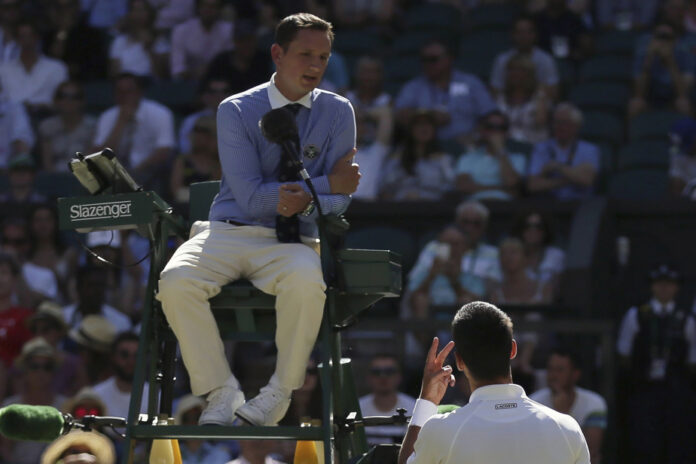New U.S. Open official Jake Garner recalls as a chair umpire having difficulty determining on the spot whether the ball had bounced twice before a player passed it through above the net.
If this situation occurs at Flushing Meadows this year, a referee will be able to watch the replay. The video review will make its Grand Slam tournament debut when the main draw gets under way in New York on August 28.
“There were certain situations where you could see the video after the game and you wished the decision had been different,” Garner told The Associated Press. Or wish for help in making this decision. »
Video review, which is different from electronic in-game line calling, will be implemented on five of the 17 fields at the U.S. Open, including Arthur Ashe Stadium, Louis Armstrong Stadium, the Grandstand, and courts 5 and 7. This sample, which will cover just over 50% of singles matches according to Garner, will be studied before a decision is made on whether the project will be extended in 2024.
This year, players in singles, doubles and mixed doubles will have three protests per set for things such as double bounds, a ball touching a player’s body, a player touching the net or a player being obstructed by the noise. They will keep their challenge if they are right and they will receive one more in the tiebreakers.
“I’ve been asking for this for a while now, so I’m glad to see the US Open is going to allow it,” said American Jessica Pegula, who was involved in a missed double-bounce call that helped the cause of his opponent Iga Swiatek during the Roland-Garros tournament last year. It will be great for players and fans. »
It’s the latest example of modern assistance for referees in the sport — and the latest example of the US Open leading the way in rule changes at major tennis tournaments.
“We are always looking to innovate,” insisted Garner.
The U.S. Open became the first Grand Slam tournament to adopt electronic calling of the lines in 2006, use a stopwatch for serves in 2018, and allow communication with coaches during matches in 2022.
The video review was tested at less publicized men’s events such as the ATP Cup and Next Gen Finals. It has not been tried in a women’s tournament.
“It’s a good step in the right direction,” said American Chris Eubanks. If the technology exists, why not use it? »
When there is a dispute, two people away from the field will send the best replay to the chair umpire screen and to the screens in the stadium. The arbitrator will have three options: confirm the original call, cancel it, or leave it as is if there is no clear video evidence one way or the other.
All replays will be requested by players and should help reduce, if not eliminate, disagreements over these situations, which occur from time to time.
“If you think something is wrong with your senses, challenge it.” Then there’s no arguing anymore,” said Australian Jordan Thompson.
Thompson lost a point in the final game of a game in Washington two years ago, even though his opponent had hit the ball after a second bounce. The two players then discussed very closely and the chair umpire had to come down to separate them.
At the Roland-Garros tournament in 2009, Serena Williams hit a ball that hit her opponent’s arm, but it was not called that way. This year in Paris, Holger Rune won a point by hitting a ball after a second bounce.
“Some referees make mistakes. Some in my favour, some not, Rune hinted. That’s life. »
Such errors should be more preventable now.















